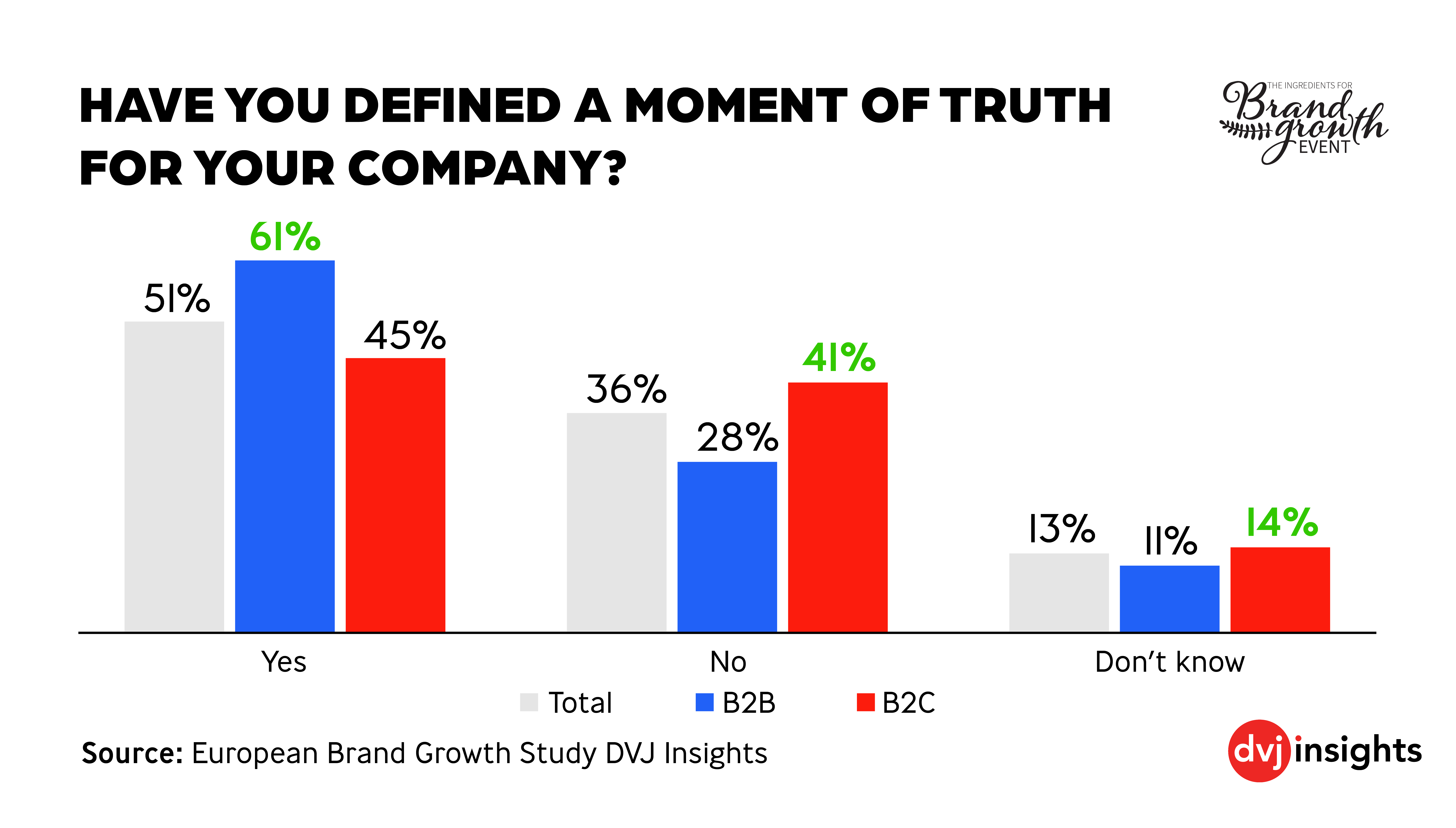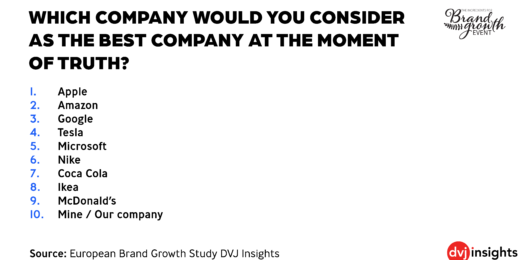Only 51% of marketers have defined their Moment of Truth
Published on 01 06 2022For every brand or product, there is a decisive moment for whether the product or service is purchased. From the many conversations DVJ Insights has with CMOs, marketing directors and CMIs each year, it becomes clear how important this moment is and how much effort is needed to be effective in this decisive moment. What marketers do during the ultimate “Moment of Truth” to win the favour of the customer is revealed in the annual Brand Growth study by DVJ Insights among over 2,300 marketing professionals in Europe.
The research shows that only 51% of marketers have a clear definition of the Moment of Truth. This also means that for 49% of marketers this important moment is not defined. Traditionally, we see a lot of attention in science for the MoT of consumers. Therefore, you would expect B2C marketers to have defined a MoT more often. However, the opposite is true: among B2B marketers, 61% have a clear idea of the MoT, compared to 45% among their B2C colleagues.
The Moment of Truth can be defined as a specific point in the customer journey, where the customer forms an indelible impression of the product/brand/service which influences the customer’s decision to purchase or enter a transaction.

Top performers have a clear view of the Moment of Truth
The importance of having a clear view of the MoT becomes clear when we look at the differences between the top performers (companies that are growing, or winners) and the companies that are doing less well (declining or stable companies, or losers). Here we see a difference of 28%, which indicates the importance of clearly defining the MoT. Especially a bad experience with a firm/brand can make customers defect.
10 companies that score well on the Moment of Truth
But which brands and companies score well on the MoT? To find out how marketers can learn from the top performers, all respondents were asked to name those companies (open question) that clearly stand out and are successful, leading to a clear top 10:

Interestingly, some firms are only mentioned in their home countries, such as ASML and Philips in the Netherlands, and Lego in Denmark.
Learning from the ‘winners’
It becomes more interesting when analysing why these companies belong to the top 10 and what “winners” do better than companies that perform less well. These insights lead to the following 3 recommendations for marketers:
- These top performers have a clear strategy that is focused on winning at the MoT. The certainty with which they do this and the attention they give to it is distinctive. On the one hand by giving attention to where the MoT takes place and on the other hand by defining as many places as possible where you can make the difference. Marketers should adopt a clear strategy.
- The companies that do well at the MoT show new ideas every time and are innovative and creative in their execution. Repeatedly, they add something or do something different, which keeps them ahead of the competition.
- In many companies, the MoT is known to the marketing directors, but less known to marketing officers in their teams. 71% of CMOs have defined a Moment of Truth for their organisation. Which is much higher than the next in line, namely the brand manager (58%), the CCO (55%), and the CEO (48%). It shows how much structural attention is needed from all marketers and that the MoT should not be limited to the boardroom.
Winning at the moment
Defining the MoT is crucial in being successful and realising growth. Companies that do this and define a clear moment are much more successful than those that do not. It is even more remarkable that only 51% of all marketers have defined a clear MoT. Therefore, marketers must start by defining this MoT. To subsequently do better than the competitors, it is important to 1) involve everyone in the organisation in this MoT and 2) innovate as a company to be distinctive, to ultimately win at the all-too-important Moment of Truth.
Download the full Brand Growth Study for free.